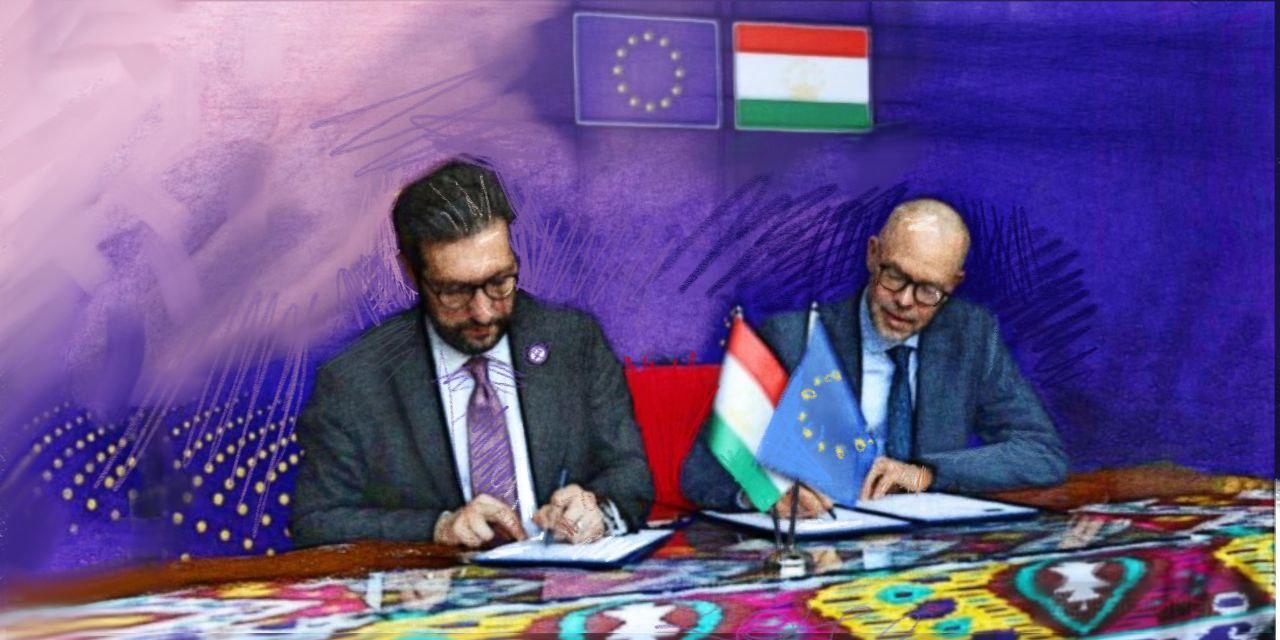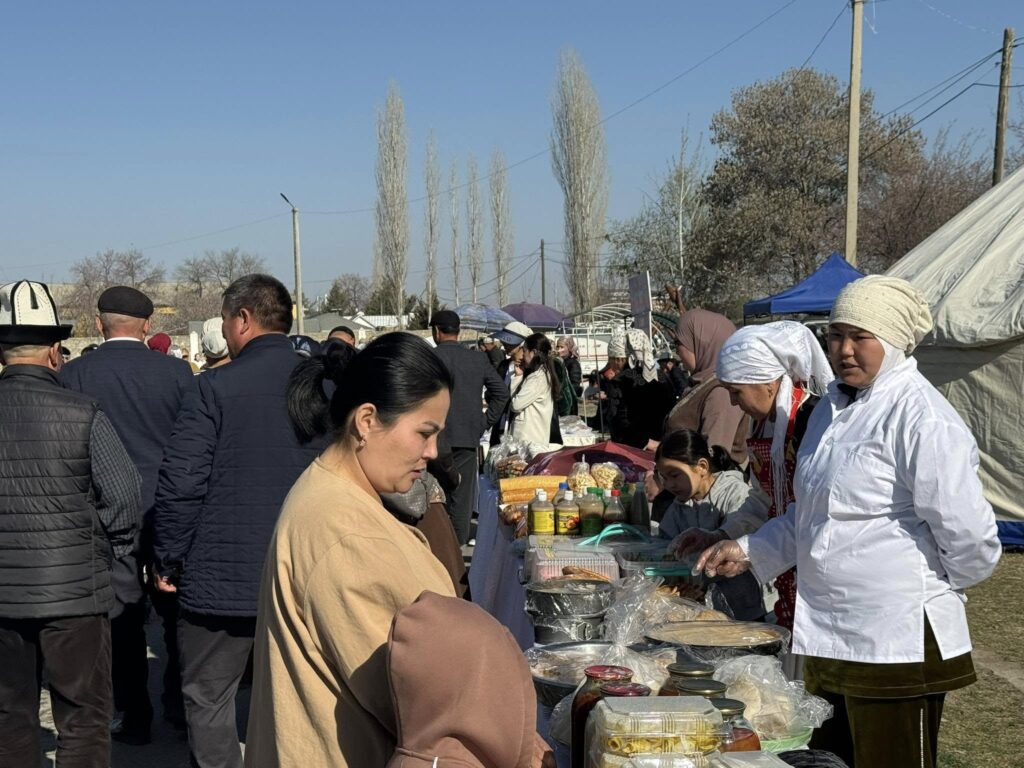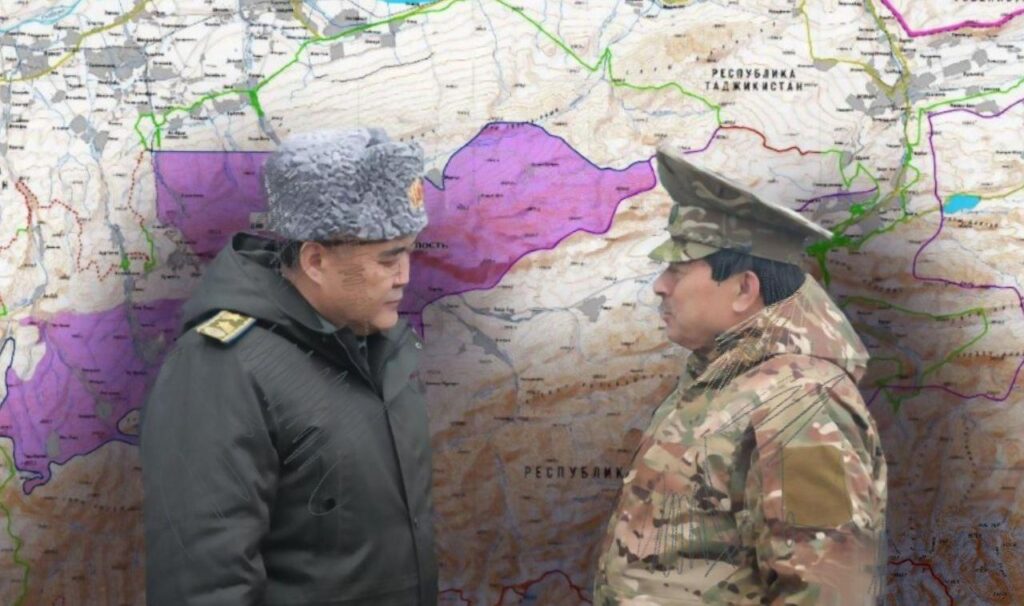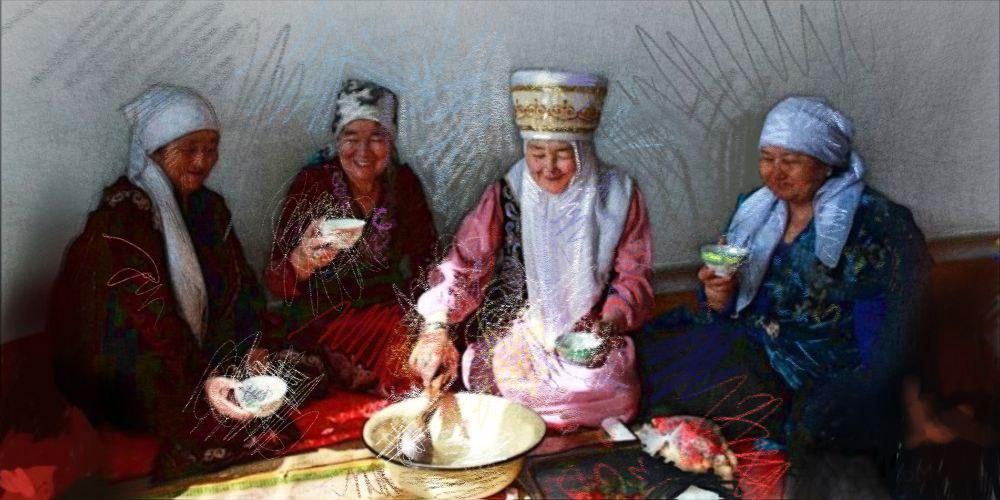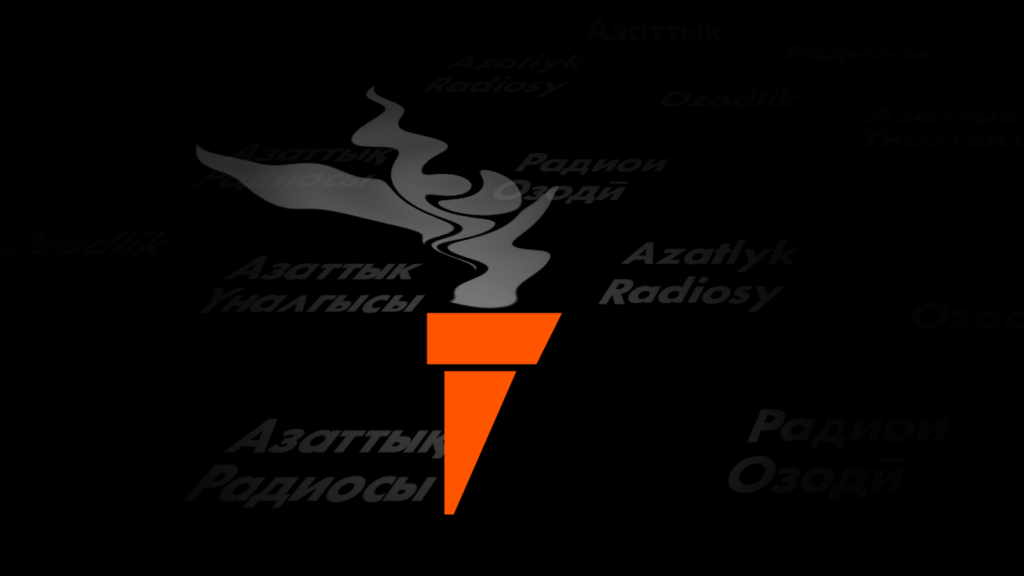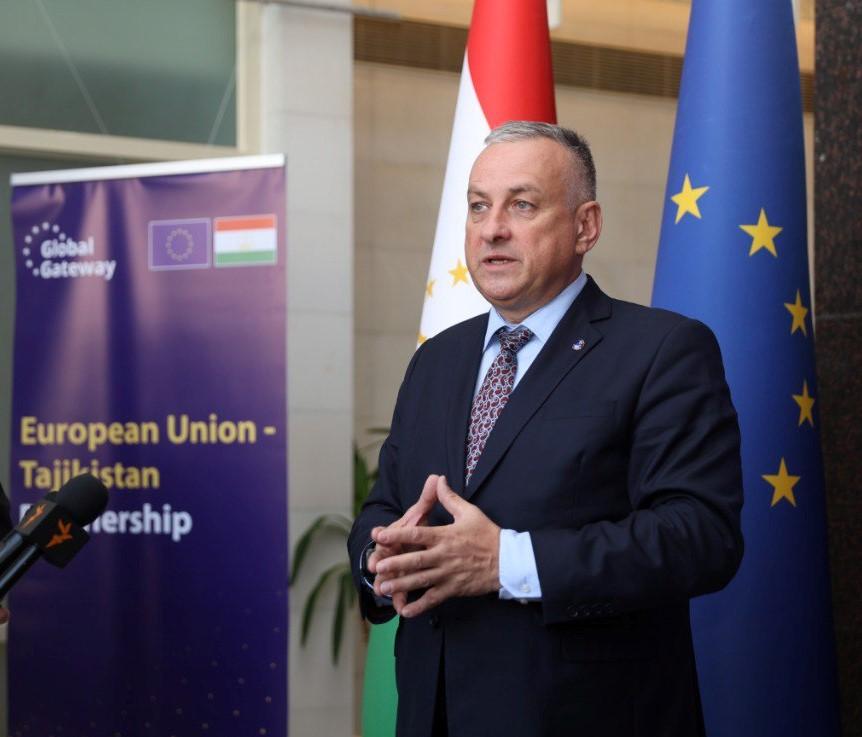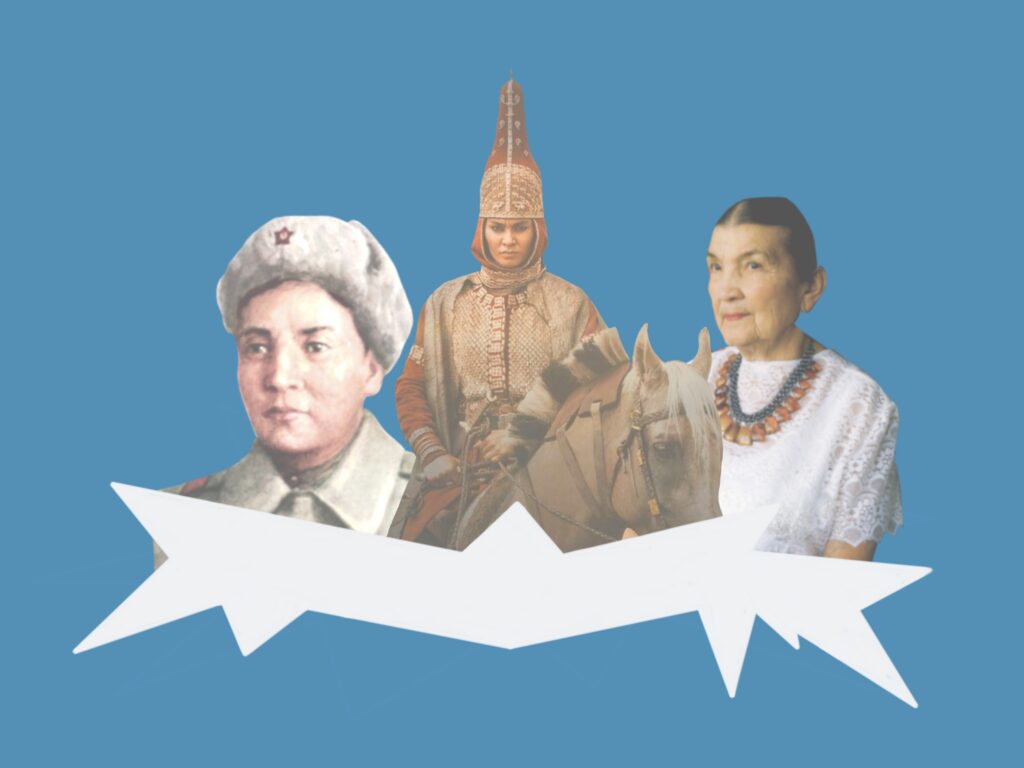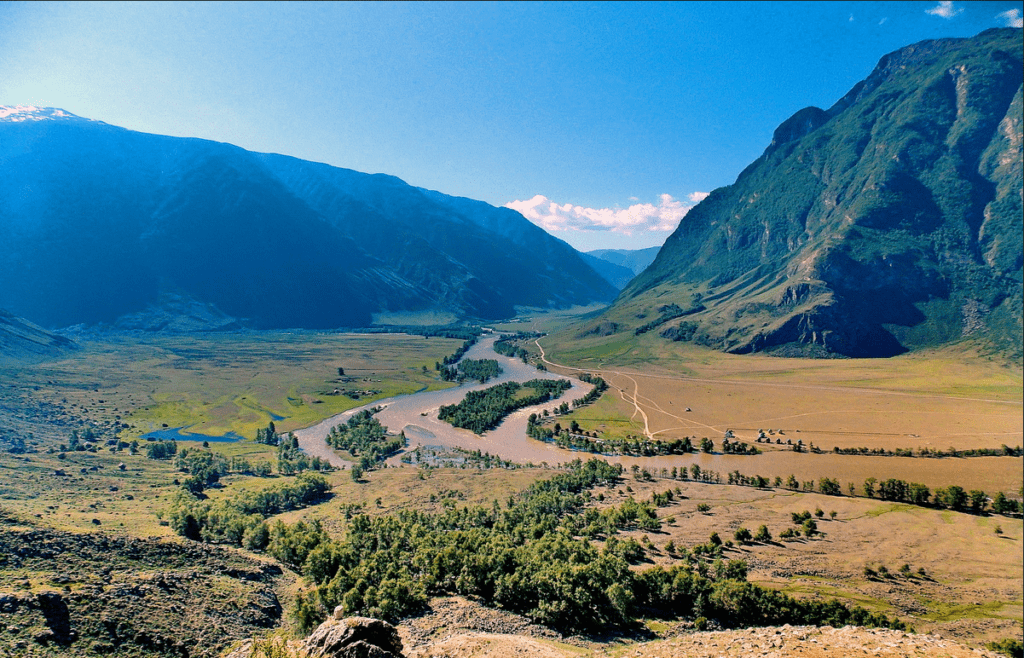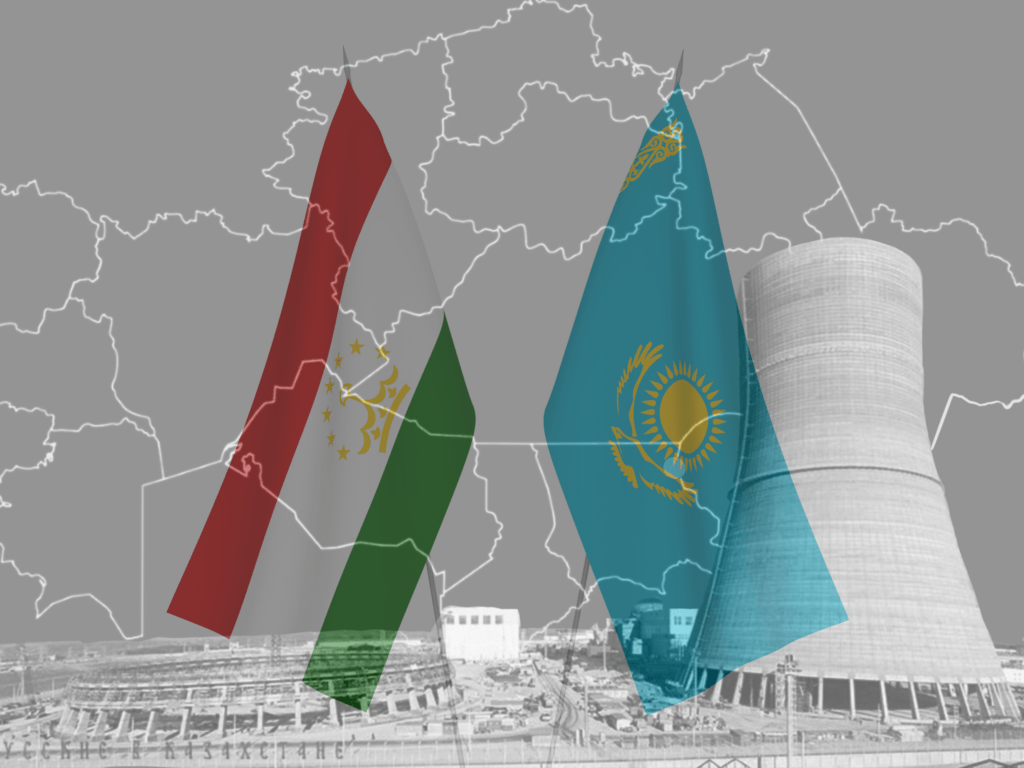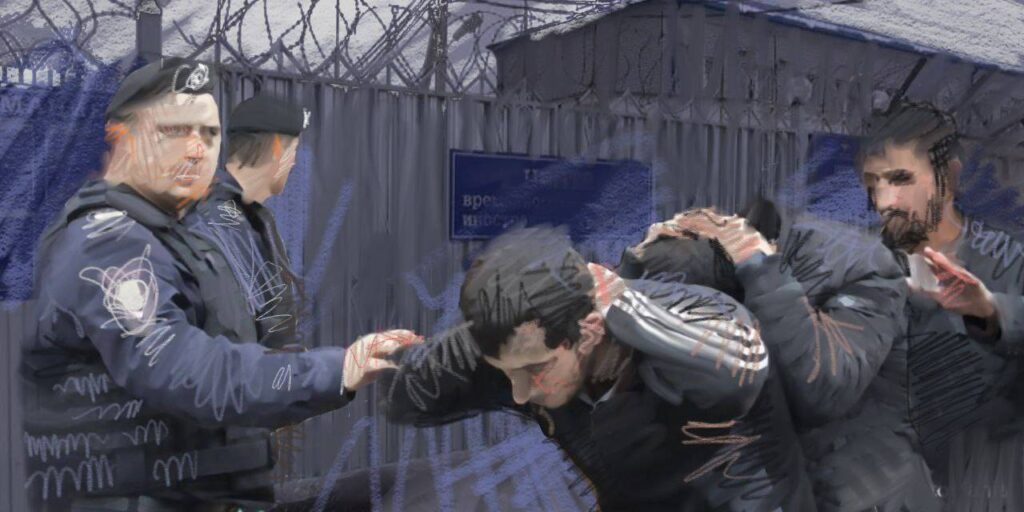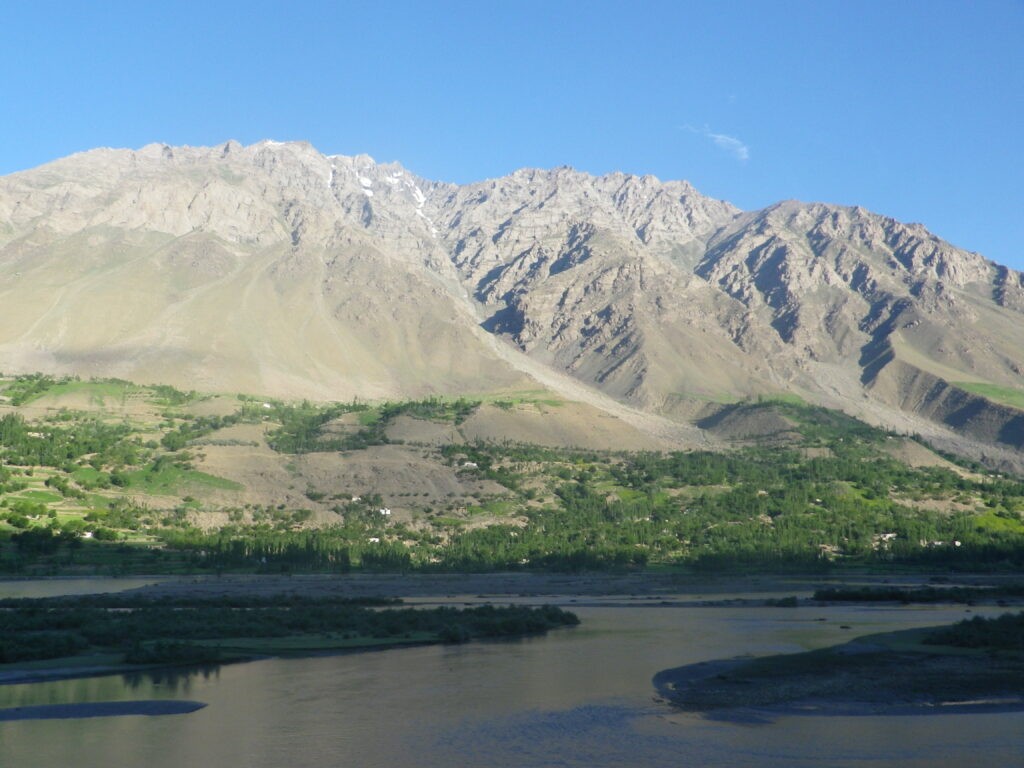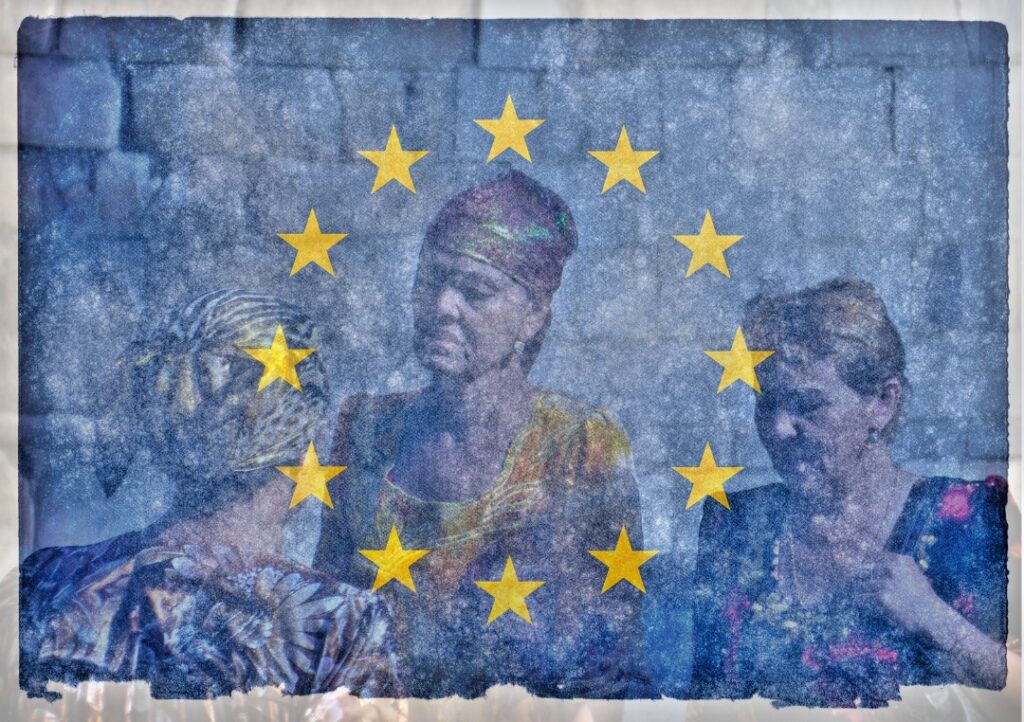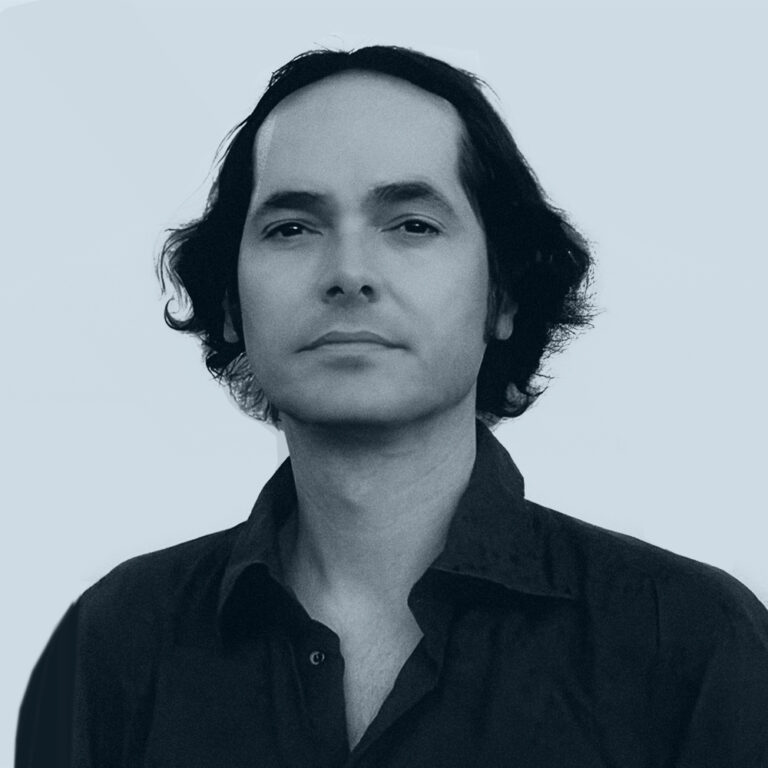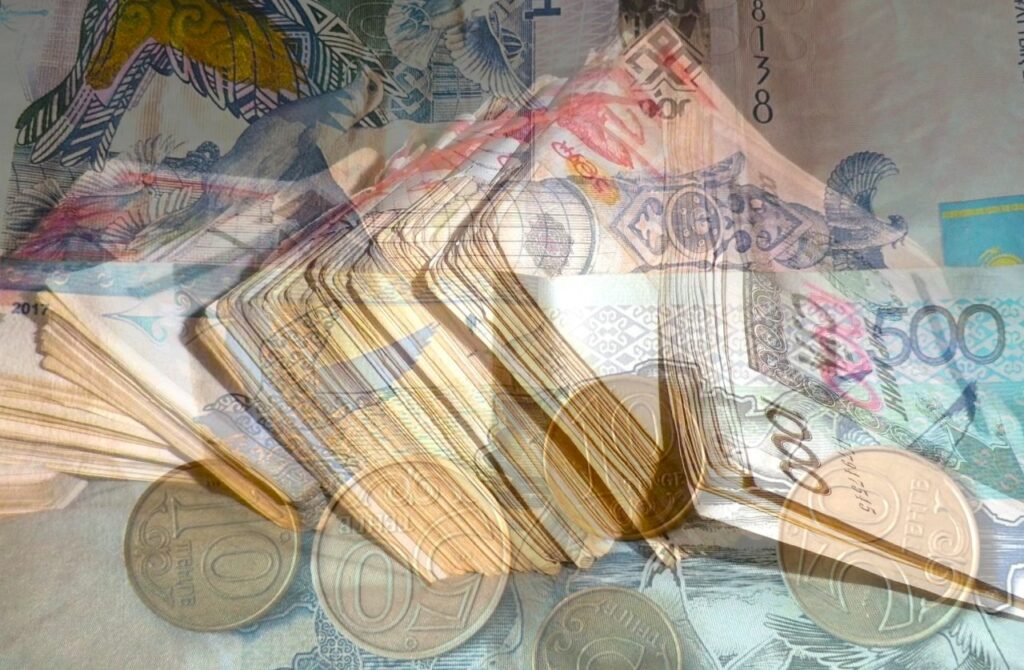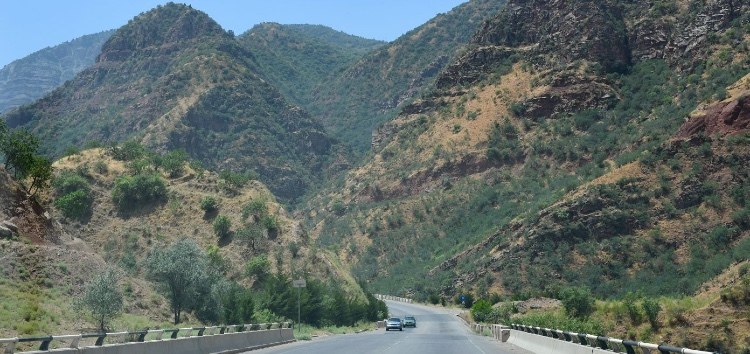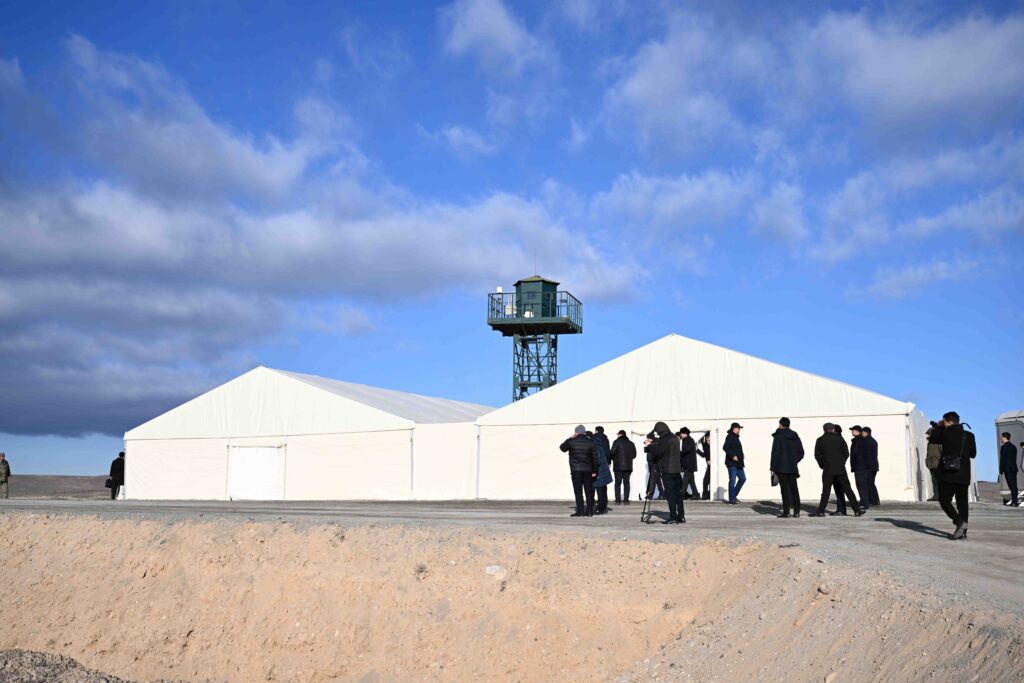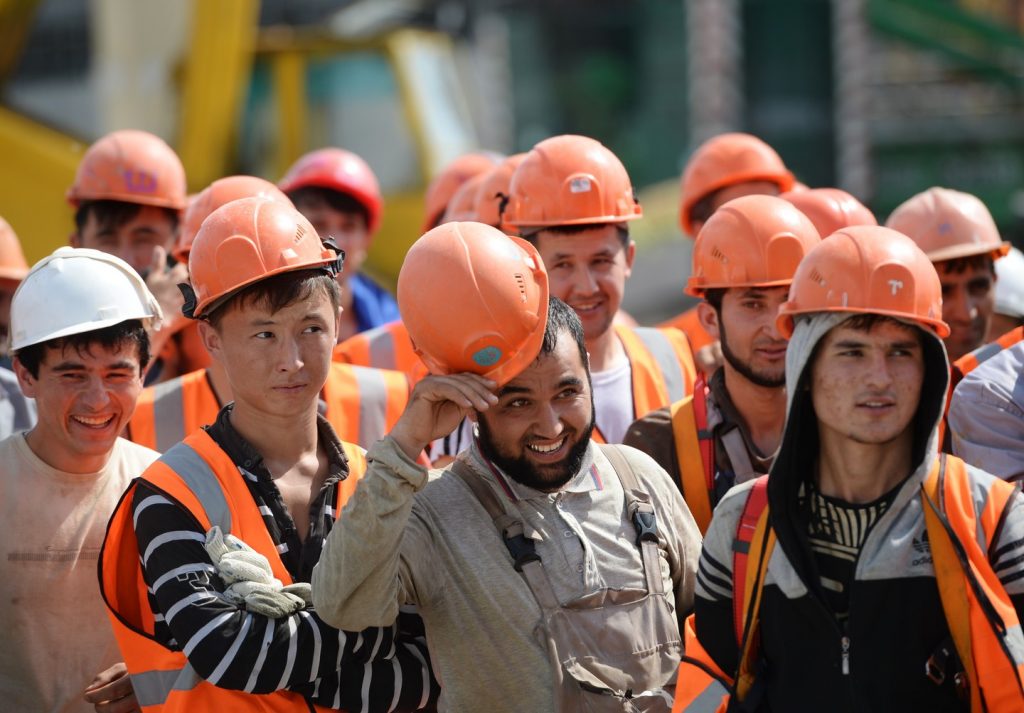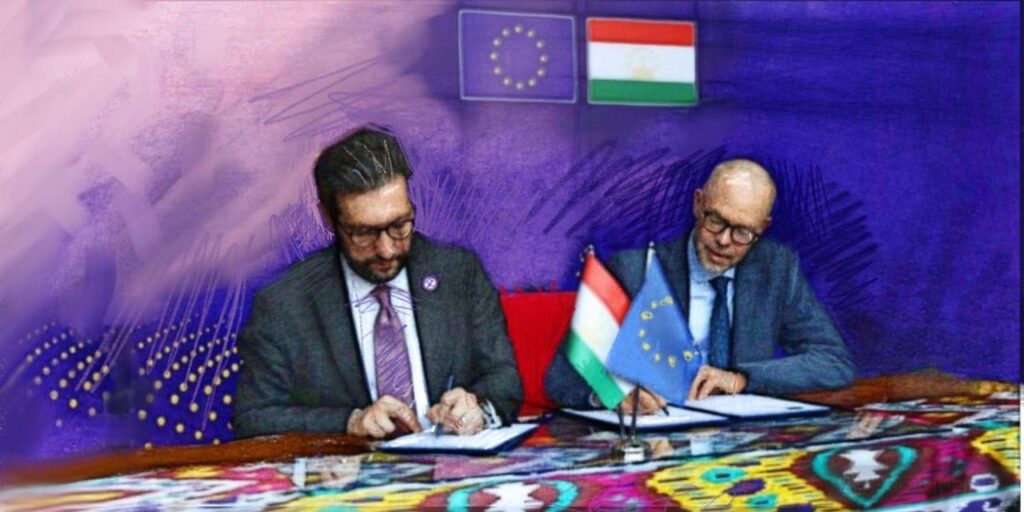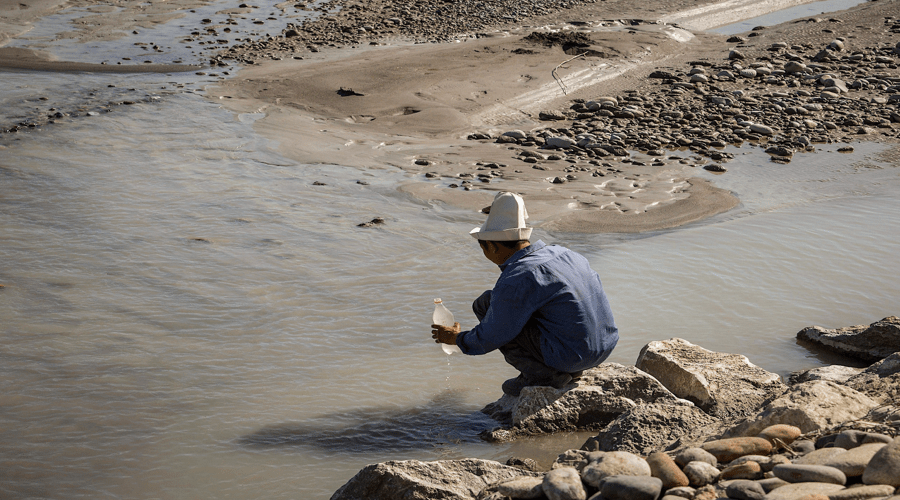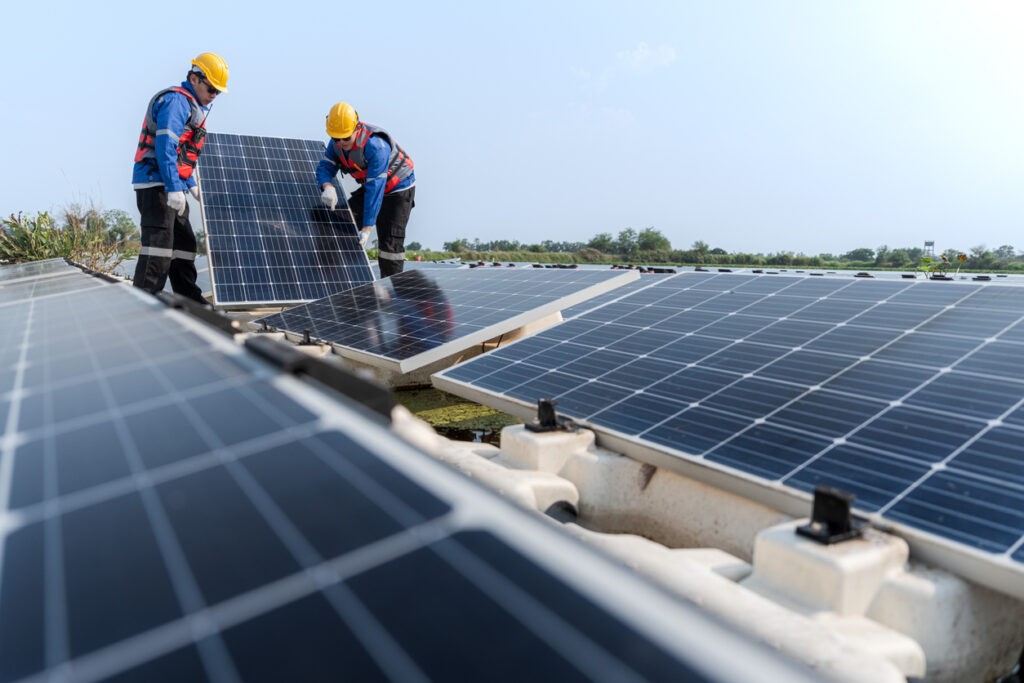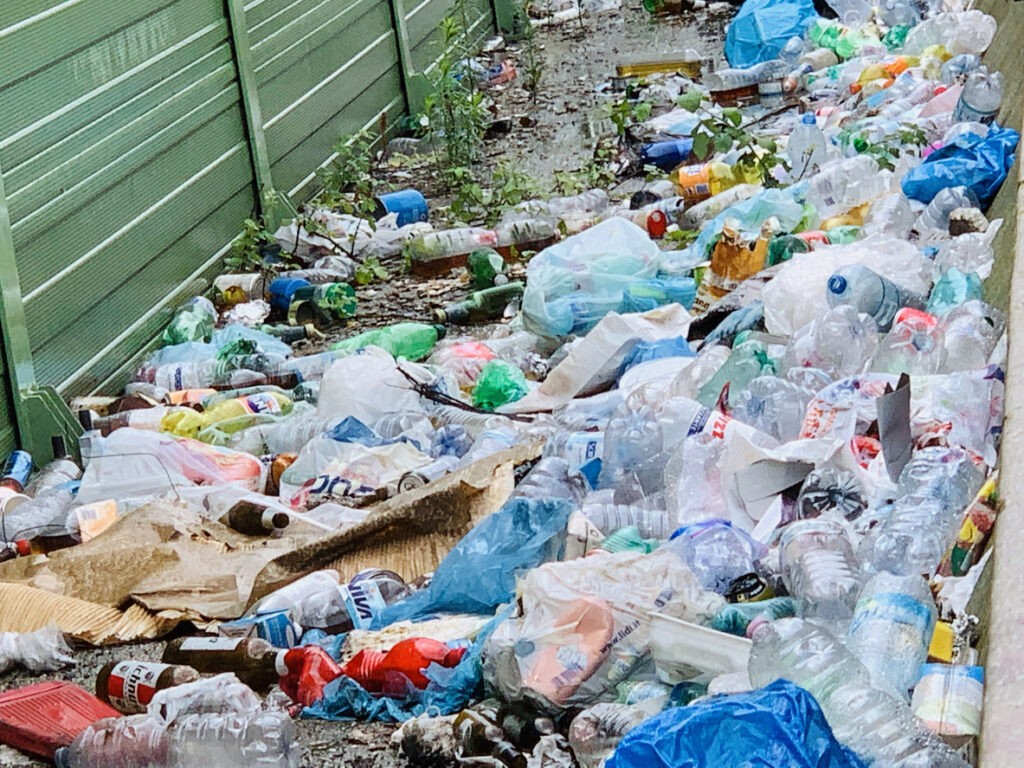Opinion: In Central Asia, the EU Defies Its “Geopolitical Dwarf” Label
As the United States and Russia reportedly aim to create a new global security architecture, other major actors in the international arena are working to improve their positions in the redefined world order. Often underestimated in terms of its geopolitical influence, the European Union has actively focused its attention on the post-Soviet space, particularly the strategically important Central Asian region. The EU, despite Russia’s and the United States' attempts to undermine its role in the settlement of the Ukraine War and to portray it as a “geopolitical dwarf”, is seeking to increase its presence in global affairs. In Central Asia, the 27-nation bloc is often viewed as a key actor that Kazakhstan, Uzbekistan, Kyrgyzstan, Tajikistan, and Turkmenistan can rely on to balance China’s growing dominance, as well as their security and dependence on Moscow. The EU's desire to strengthen cooperation with Central Asia can be seen as Brussels’ attempt to reduce Russia's influence in the region. Indeed, bogged down in Ukraine, Moscow is slowly but surely being pushed out of Central Asia – a region that has traditionally been within the Kremlin’s geopolitical orbit. As a result, China has managed to significantly increase its economic presence in all five Central Asian nations. The EU is now attempting to do the same. The recent visit of the European Commissioner for International Partnerships Jozef Síkela to Central Asia, as well as the upcoming EU-Central Asia summit scheduled for April 3-4, 2025 in Samarkand, clearly indicates the intensifying geopolitical competition between the EU and China over the region. One of Síkela’s major goals was to expand the scope of the EU's investment strategy, Global Gateway, in Central Asia. The project, launched in 2021, is often viewed as the EU’s version of China’s Belt and Road Initiative (BRI). As part of its strategy to increase its economic presence in Central Asia, the European Union seems to have four priorities: the development of transport infrastructure (particularly the Trans-Caspian International Transport Route, also known as the Middle Corridor), cooperation in raw materials, digital connectivity, and the development of the water resources, energy, and climate sectors. The problem for Brussels is that China, due to its proximity to Central Asia and the lack of bureaucratic procedures, is ahead of the EU in most, if not all of these areas. Beijing has had 12 years to strengthen economic ties with the region through the BRI. As a result, in 2024, China’s overall turnover with Central Asia reached $94.8 billion, nearly double the EU's trade volume with the region in 2022, which stood at $47 billion. Last year, the world’s second-largest economy replaced Russia as Kazakhstan's biggest trade partner. In neighboring Uzbekistan, it remains the top trading partner, while in Tajikistan, over the past 18 years, China has become the major investor in the landlocked nation’s economy. The same applies to Tajikistan and China’s neighbor Kyrgyzstan. The European Union, however, is now intensifying its efforts to position itself as a major foreign power operating in Central Asia. According to the EU Delegation to Uzbekistan, the upcoming summit in Samarkand will present a “key opportunity for the EU to demonstrate its geopolitical interest in intensifying bilateral engagement and enhance regional cooperation with Central Asia.” For Brussels, critical minerals, along with natural gas and oil, play perhaps the most important role in its Central Asia strategy. The 27-nation bloc has already signed memoranda of understanding with Kazakhstan and Uzbekistan on raw materials, while it is also eyeing establishing closer energy ties with gas-rich Turkmenistan. The EU is aiming to help Ashgabat integrate into regional and global trade networks and to take part in the modernization of the nation’s infrastructure. Such an approach aligns perfectly with the EU’s 2019 New Strategy for Central Asia, which emphasizes the growing strategic importance of the region for the interests of the European Union. In other words, the EU’s goals in Central Asia are not much different from U.S. President Donald Trump’s ambitions of gaining access to Ukraine’s natural resources. Unlike the American leader, however, the European Union is not in a position to issue ultimatums. Fully aware of that, the EU is seeking to increase its soft power in the region. Its plans to improve internet connections in remote rural areas in Kazakhstan, Uzbekistan, Kyrgyzstan, and Tajikistan perfectly illustrate Brussels’ strategy to strengthen influence in the region by winning the hearts and minds of the local population. Moreover, given the fundamental transformation of USAID and the Trump administration's reluctance to allocate billions of dollars for grant projects, the EU has the opportunity to seize the initiative and expand its presence in Central Asia by funding local non-governmental organizations and media. Euronews’ ambitions to develop media cooperation with Turkmenistan could be interpreted as one of the first steps in that direction. Central Asian nations, on the other hand, see the EU as a counterbalance to the growing Chinese economic dominance in the region. For them, cooperation with the 27-nation bloc could be a chance to diversify their foreign trade and attract additional investments for the development of infrastructure and other key sectors of their economies. Although policymakers in Beijing are undoubtedly aware that the EU, in the long-term, could become China’s major competitor in Central Asia, the People’s Republic does not seem to oppose Brussels’ plans to develop the Trans-Caspian Transport Corridor. The route – beginning in China and running through Kazakhstan, the Caspian Sea, Azerbaijan and Georgia, and on into Europe – effectively bypasses Russia, and reduces delivery times between Europe and China to 15 days. From a purely economic perspective, the Middle Corridor benefits China’s cooperation with Europe. More importantly, Ukrainian officials claim that some goods from China will be transported to Europe through Ukraine via the Trans-Caspian Transport Corridor, suggesting that Russia may eventually stop playing the role of a transit country. As a result, the Kremlin may have a hard time preserving remnants of its influence in Central Asia, where the EU and China could soon start a geopolitical battle for dominance.
Tajik Entrepreneurs Return to Kyrgyz Markets
Following the reopening of the Kyrgyz-Tajik border, Tajik entrepreneurs have resumed visits to markets in Batken Oblast, Kyrgyzstan. Local media report that residents are welcoming the return of their southern neighbors. Once a week, the market in Ak-Turpak village becomes a hub of activity, drawing sellers and buyers from across the region and neighboring countries. A major draw is Batken rice, which resellers purchase in bulk for export to Uzbekistan and Russia. According to local vendors, the market can sell up to 200 tons of rice on a busy day. Rice is cultivated across 3,000 hectares in this border region and remains a vital source of income for many farmers. With the border now open and economic ties restored, buyers from Isfara, Tajikistan, have begun frequenting the Ak-Turpak market, offering a welcome boost to Kyrgyz vendors. As previously reported by The Times of Central Asia, residents of Batken’s border districts also benefit from cross-border trade, often finding it more economical to purchase certain fruits and vegetables in Tajikistan than in Kyrgyzstan’s oblast centers. On March 13, 2025, following the signing of bilateral agreements, the Kairagach and Kyzyl-Bel border checkpoints in Batken Oblast officially reopened. According to Kyrgyzstan’s Border Guard Service, approximately 5,000 people crossed the Kyrgyz-Tajik border between March 13 and 17. An additional 500 individuals crossed by air. Prior to the agreement, all crossings had remained closed since 2021.
A New Chapter of Peace and Cooperation in Central Asia: The Kyrgyz-Tajik Border Agreement
On March 13, 2025, a historic milestone was achieved with the signing of the Kyrgyz-Tajik border agreement. This long-anticipated treaty, signed by Kyrgyzstan's President Sadyr Japarov and Tajikistan’s President Emomali Rahmon, resolved a long-running dispute over the 984-kilometer boundary between the two nations. Clashes in 2021 and 2022 left scores dead, hundreds wounded, and thousands displaced. The resolution marked not only the end of an enduring source of regional tension but also the beginning of a prospective era of peace and collaboration. The significance of this agreement is substantial and far-reaching. For decades, the unresolved Kyrgyz-Tajik border remained a flashpoint for clashes, occasionally escalating into violence between communities living in border regions such as Batken. The new treaty now promises a peaceful future, with both leaders showing their commitment to long-term regional stability. A Diplomatic Achievement The path to this agreement was anything but straightforward, with Kyrgyz President Japarov characterizing the land exchanges involved in the treaty as a “tough but necessary decision.” During Nauryz celebrations in Osh, Japarov praised the expert teams who worked for four years to reach a settlement that balanced the interests of both sides. Japarov emphasized the benefits of the treaty for border-area communities, specifically in Batken, where tensions have been acute. The “lives of our citizens in border areas of the Batken region will be peaceful from now on,” he stated, promising new homes for residents displaced during past conflicts. The treaty aims to bring not only peace but also economic development, as secure frontiers pave the way for cross-border trade and infrastructure investment. For Tajikistan's President Rahmon, the agreement not only resolved a geopolitical challenge but reinforced the shared value of cooperation in the region. His message during Nauryz to President Japarov symbolized the optimism underpinning their new relationship. “I am confident that our countries, relying on the high universal values of this ancient holiday, will continue their joint efforts to enrich the content of their multifaceted relations,” Rahmon wrote. Messages of Support on a Symbol of Renewal The signing of the treaty aligned closely with Nauryz, the ancient festival that symbolizes renewal, prosperity, and unity across Central Asia. World leaders also viewed the timing as auspicious, with U.S. President Donald Trump extending his congratulations to President Rahmon in a message of goodwill on the occasion of Nauryz. “This is a major achievement that will bring great economic benefits and security to both countries," Trump wrote, highlighting the agreement's potential to stabilize the region. Trump also reaffirmed America's support for Tajikistan’s sovereignty, underscoring the importance of ongoing cooperation. His words echoed a broad international sentiment celebrating the Kyrgyz-Tajik agreement as a step toward enhanced regional partnerships. Regional Cooperation on the Rise The Kyrgyz-Tajik border agreement forms part of a broader trend of strengthening ties among Central Asian nations. Recently, Kyrgyzstan resolved a similar border issue with Uzbekistan, setting a precedent for peaceful dispute resolution. Now, Japarov has suggested taking the next step by creating a visa-free travel regime and even a unified regional visa for international visitors. Such moves could transform the region into a hub for tourism and cooperation, further integrating Central Asia both economically and diplomatically. The possibility of closer ties will once again take center stage when the leaders of Kyrgyzstan, Tajikistan, and Uzbekistan meet in Khujand on March 31 to sign an agreement on their respective borders. Challenges and Opportunities Ahead While the landmark Kyrgyz-Tajik treaty paves the way for peace, challenges remain. Inhabitants of border regions will require assurance and tangible support to adapt to the newly drawn boundaries. Infrastructure, housing, and public services will be crucial to the pact’s long-term success. Nonetheless, the treaty has set a powerful example of diplomacy triumphing over discord.
Celebrating Nauryz: A Timeless Tradition of Unity, Renewal, and Heritage in Central Asia
Nauryz is more than just a holiday - it is a symbol of spring renewal, harmony, and unity that has been celebrated by the peoples of Central Asia for centuries. Marking the arrival of the spring equinox, Turkic communities welcome the New Year with purification rituals, festive gatherings, and traditional games. While the holiday shares common roots across the region, each country celebrates it uniquely, reflecting its distinct cultural heritage.
Nauryz has survived through the centuries, and despite the evolution of the celebration in the modern era, it continues to unite people through traditions.
Kazakhstan
In Kazakhstan, Nauryz is celebrated on a large scale, transforming cities and villages into festival grounds filled with folk rituals, sporting events, and cultural performances. The holiday begins with blessings from elders and family visits. At the heart of the festive table is Nauryz-kozhe, a traditional soup made from seven ingredients, each symbolizing key values in life.
“Nauryz without Nauryz-kozhe is not Nauryz," Daniyar, 29, from Almaty, told The Times of Central Asia. "When I was a child, my grandmother told me that eating it would bring luck for the year. That’s why the whole family gathers around the table.”
Beyond feasting, Nauryz is a time for competitions. Among the most popular are kokpar, an equestrian contest where riders traditionally competed for a goat carcass - now often replaced with a dummy version (serke), asyk atu, a traditional game of precision using sheep bones, and kazaksha kures, a national wrestling competition.
“As a child, I always looked forward to this day because it was when I could see adults displaying strength and skill," Sanzhar, 25, from Taraz, told TCA. "These traditions are passed down through generations and strengthen our culture.”
Ancient customs also come to life during the festival. People wear traditional Kazakh attire, exchange gifts, and partake in purification rituals.
“When I put on a [traditional] Kazakh costume, I feel a deep connection with my ancestors. There’s something magical about this holiday - the aroma of freshly cooked kozhe, the sound of the dombra, the folk dances, and the spirit of unity. It’s a day to remember who we are and take pride in our culture,” said Aizhan, 40, from Astana.
[caption id="attachment_29953" align="aligncenter" width="1200"]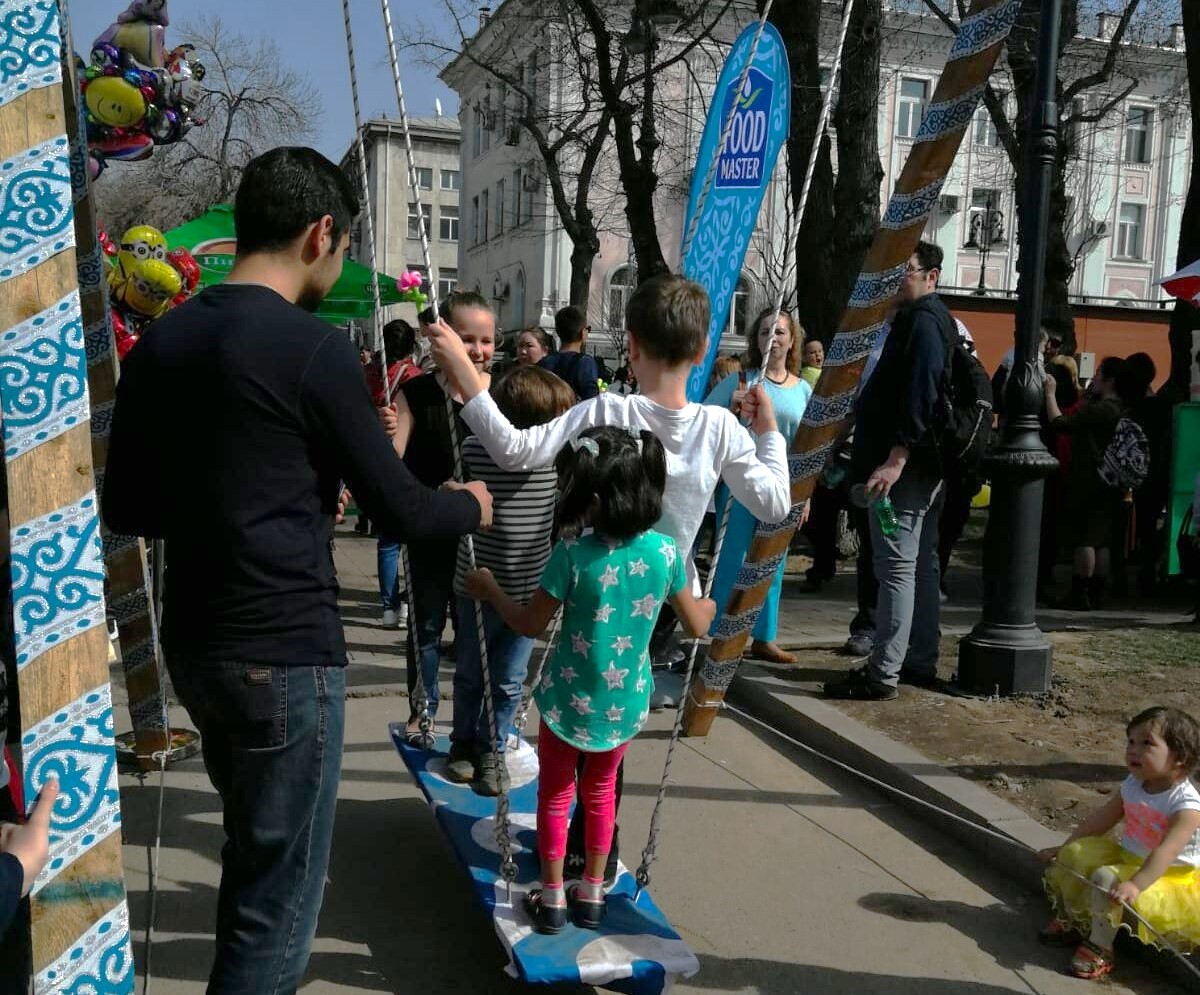 Nauryz celebration in Almaty; image: TCA[/caption]
Kyrgyzstan
In Kyrgyzstan, Nauryz represents renewal and rebirth. The celebrations begin with a cleansing ritual, where people clean their homes, courtyards, and even their minds, symbolizing a fresh start. Hospitality plays a central role, as it is customary to host and visit seven guests, symbolizing openness and strong social bonds.
Like in Kazakhstan, Nauryz-kozhe is a staple of the festive table. However, Kyrgyz cuisine also features kuurdak, fried meat with potatoes and onions, and osh - also known as plov or palov - emphasizing the tradition of generous feasting.
The holiday is further enriched by national sporting competitions, including horse races, wrestling (kuresh), ordo, a traditional strategy game, and arkan tartysh, a tug-of-war contest.
“For us, Nauryz is more than just a holiday. It’s a time to come together, reconnect with traditions, and welcome the fresh energy of spring,” Asyl, 28, from Bishkek, told TCA.
Uzbekistan
In Uzbekistan, Nauryz carries a deep historical significance. The festival begins with a purification ritual, followed by family gatherings around a festive table. The centerpiece of the Uzbek Nauryz feast is sumalyak, a dish made from sprouted wheat, symbolizing fertility and prosperity. Its preparation is a social event in itself, accompanied by singing and well-wishing.
Other traditional dishes include pilaf, manty (steamed dumplings), naryn (a cold noodle dish), and flatbreads (non). The holiday is marked by folk performances, concerts, and sporting competitions. Among them, Kurash, Uzbekistan’s national form of wrestling, remains a crowd favorite.
“In our family, Nauryz is a special occasion," Dildora, 32, from Tashkent, told TCA. "We not only bring our relatives together but also pass down our traditions and values to the younger generation. While modern celebrations now include large concerts and street performances in Tashkent, we remain committed to our traditions.”
[caption id="attachment_29954" align="aligncenter" width="1200"]
Nauryz celebration in Almaty; image: TCA[/caption]
Kyrgyzstan
In Kyrgyzstan, Nauryz represents renewal and rebirth. The celebrations begin with a cleansing ritual, where people clean their homes, courtyards, and even their minds, symbolizing a fresh start. Hospitality plays a central role, as it is customary to host and visit seven guests, symbolizing openness and strong social bonds.
Like in Kazakhstan, Nauryz-kozhe is a staple of the festive table. However, Kyrgyz cuisine also features kuurdak, fried meat with potatoes and onions, and osh - also known as plov or palov - emphasizing the tradition of generous feasting.
The holiday is further enriched by national sporting competitions, including horse races, wrestling (kuresh), ordo, a traditional strategy game, and arkan tartysh, a tug-of-war contest.
“For us, Nauryz is more than just a holiday. It’s a time to come together, reconnect with traditions, and welcome the fresh energy of spring,” Asyl, 28, from Bishkek, told TCA.
Uzbekistan
In Uzbekistan, Nauryz carries a deep historical significance. The festival begins with a purification ritual, followed by family gatherings around a festive table. The centerpiece of the Uzbek Nauryz feast is sumalyak, a dish made from sprouted wheat, symbolizing fertility and prosperity. Its preparation is a social event in itself, accompanied by singing and well-wishing.
Other traditional dishes include pilaf, manty (steamed dumplings), naryn (a cold noodle dish), and flatbreads (non). The holiday is marked by folk performances, concerts, and sporting competitions. Among them, Kurash, Uzbekistan’s national form of wrestling, remains a crowd favorite.
“In our family, Nauryz is a special occasion," Dildora, 32, from Tashkent, told TCA. "We not only bring our relatives together but also pass down our traditions and values to the younger generation. While modern celebrations now include large concerts and street performances in Tashkent, we remain committed to our traditions.”
[caption id="attachment_29954" align="aligncenter" width="1200"] Traditional treats for Nauryz; image: TCA[/caption]
Tajikistan
In Tajikistan, Nauryz is a time for renewing family ties, strengthening friendships, and seeking forgiveness. People visit relatives and friends, exchange gifts, and offer sincere well-wishes, embracing the spirit of unity.
As in other Central Asian nations, the Tajik festive table is central to the celebration, with the most important dish being plov. The communal meal brings families together to share not only their food but also joy.
Music is an integral part of Tajik Nauryz traditions. Folk instruments such as the dutar, tanbur, dumbrak, and Kashgar rubab fill the air with festive melodies, while traditional dances serve as a joyful expression of the holiday.
Turkmenistan
Nauryz in Turkmenistan is a vibrant celebration that symbolizes renewal, unity, and the return of warmth following the harsh winter. Deeply rooted in Turkmen heritage, the holiday is celebrated with family gatherings, traditional music, dances, and festive meals. A highlight of the celebration is the preparation of semeni, a dish made from sprouted wheat, symbolizing abundance and prosperity. Communities engage in cultural performances and sports, reaffirming their sense of national pride and cultural identity.
Despite globalization and modernization, Nauryz continues to unite the peoples of Central Asia. It is not just a holiday, but a living tradition, a time for family, gratitude, and cultural pride. Whether through age-old customs, festive meals, or exhilarating competitions, Nauryz remains a powerful symbol of renewal and shared heritage across the region.
Traditional treats for Nauryz; image: TCA[/caption]
Tajikistan
In Tajikistan, Nauryz is a time for renewing family ties, strengthening friendships, and seeking forgiveness. People visit relatives and friends, exchange gifts, and offer sincere well-wishes, embracing the spirit of unity.
As in other Central Asian nations, the Tajik festive table is central to the celebration, with the most important dish being plov. The communal meal brings families together to share not only their food but also joy.
Music is an integral part of Tajik Nauryz traditions. Folk instruments such as the dutar, tanbur, dumbrak, and Kashgar rubab fill the air with festive melodies, while traditional dances serve as a joyful expression of the holiday.
Turkmenistan
Nauryz in Turkmenistan is a vibrant celebration that symbolizes renewal, unity, and the return of warmth following the harsh winter. Deeply rooted in Turkmen heritage, the holiday is celebrated with family gatherings, traditional music, dances, and festive meals. A highlight of the celebration is the preparation of semeni, a dish made from sprouted wheat, symbolizing abundance and prosperity. Communities engage in cultural performances and sports, reaffirming their sense of national pride and cultural identity.
Despite globalization and modernization, Nauryz continues to unite the peoples of Central Asia. It is not just a holiday, but a living tradition, a time for family, gratitude, and cultural pride. Whether through age-old customs, festive meals, or exhilarating competitions, Nauryz remains a powerful symbol of renewal and shared heritage across the region.
Opinion: What the Loss of RFE/RL Would Mean for Central Asia
The decision to terminate the federal grant agreement funding for Radio Free Europe/Radio Liberty (RFE/RL) is a crushing blow for hundreds of millions of people. These people know their governments are not telling them the full truth about what is happening in their countries or in the world outside. The objective information provided by RFE/RL has been important to people such as these. Perhaps as important, since the end of the Cold War, was the platform RFE/RL provides, whenever possible, for people in these countries to explain their views to the outside world. I know, because I worked at RFE/RL for 25 years covering Central Asia. RFE/RL was founded in 1950, and I didn’t show up there until 1997. I can only speak about what I saw and heard when I was an RFE/RL employee. My understanding of my tasks as an RFE/RL employee was that we were supposed to keep close track of what was happening in Central Asia, cover as many of the important topics of the region as possible, and make objective and accurate information on these topics available to the people in Central Asia. During Tajikistan’s 1992-1997 civil war, for example, RFE/RL’s Tajik service, Radio Ozodi, was the most trusted source of information for the people of Tajikistan. During the Coronavirus pandemic, the Turkmen government would not even allow the word COVID to be spoken and denied there were any cases of the virus in the country, leaving RFE/RL’s Turkmen service, Azatlyk, as one of the only sources of information for Turkmenistan’s people about the illness. I lived in Central Asia before joining RFE/RL, so I had some idea of what was important to people there. Calling for respect for fundamental rights is a big part of RFE/RL’s work. Read the constitutions of any Central Asian country and you will see enshrined there the right to freedom of speech, freedom of assembly, the right to freely receive or disseminate information, and much more. In practice, these rights are not always observed in Central Asia. In such a situations RFE/RL’s Central Asian services are a voice for those who, with good reason, are afraid to speak out publicly, or more importantly, for those who did speak out and are punished for that. At RFE/RL we looked for “impact stories,” testimony from people of the region about unfulfilled government promises, abuses, or state mismanagement that were hurting communities and individuals. Central Asian government officials are among the most faithful RFE/RL listeners, and often RFE/RL reports that raised social issues led officials to rectify the situation. Ramshackle buildings or schools were suddenly repaired, electricity or running water became accessible to city districts and rural areas, sufficient food became available to communities. The pleas of average citizens too often fell on deaf ears in government halls, but the criticism of an international organization such as RFE/RL, which was broadcasting to the entire country and Central Asian region, was too embarrassing for officials to ignore. This made RFE/RL unpopular with Central Asian governments, but if it resulted in an improvement in the lives of the Central Asian people; that was really what was important. In all those years I was working for RFE/RL and traveling in Central Asia, hundreds of people told me how much they appreciated RFE/RL for helping shed light on their problems. The people of Central Asia also told me, and tell RFE/RL’s Central Asian services every day, about how they see their countries and the world. This is hugely important for the world’s understanding of Central Asia. Too many reports from foreign media refer to “post-Soviet” Central Asia, or “the Stans,” but behind these terms are a variety of peoples and cultures that pre-date by millennia the Soviet Union or the use of the suffix “stan.” Anyone accessing RFE/RL’s Central Asian services’ website can find out what people living in Central Asia are saying about Russia, China, the United States, Europe, the Middle East, or issues such as climate change, global trade, terrorism, and other topics. Their views are often different from what their governments say publicly. One last point is RFE/RL’s legacy. When I started working there, it was less than a decade since the wall came down and countries in East and Central Europe were freed from being part of the Communist Bloc. Czech President Vaclav Havel visited the RFE/RL building several times. So did top officials from the governments of former Communist countries. Like Havel, they were opposed to the Soviet-imposed governments in their countries. I and other RFE/RL employees would gather to listen to them speak, and these officials told us how much RFE/RL meant to them when they were living under communism. RFE/RL was a source of information, in the local languages, about what was happening in their countries and in the wider world, and they were grateful for that information. What I remember best was that some of these Central and Eastern European officials said RFE/RL’s broadcasts were a reminder that America had not forgotten them. Those broadcasts brought hope, and when hope became reality and independence finally came, the leaders of these countries wanted to express their gratitude to RFE/RL, and more broadly to the United States, for never forgetting about them and their countries, and for supporting their nations’ aspirations to be free. I am not looking to sugarcoat RFE/RL or America’s reputation in Central Asia. For every person there who expressed their gratitude to me for RFE/RL’s work, there were at least two others who criticized RFE/RL as American propaganda and an attempt to push Western values on Central Asia. But even this shows the huge difference between RFE/RL and media from countries such as China or Russia. Central Asians felt comfortable enough to exercise their right to freedom of speech and tell me, an American, about what they believed were RFE/RL’s shortcomings. Would they feel sufficiently comfortable to criticize Russian or Chinese reporting on Central Asia to a Russian or Chinese journalist? And here is where the real dilemma of abandoning RFE/RL’s media space in its target countries is clearly seen. Recent incidents in Central Asia highlight the use of force by authorities to manage unrest, often leading to casualties. Examples include events in Andijan (2005), and Kazakhstan, Gorno-Badakhshan in Tajikistan, and Karakalpakstan in Uzbekistan (2022). Critics have suggested these responses involved excessive force. While outlets like RFE/RL raised concerns, Russian and Chinese media backed the government’s actions, reflecting their interest in supporting the stability of existing regimes and aligning their narratives with local authorities. The loss of RFE/RL is the loss of the other side of the story.
Tajikistan to Modernize Energy, Cotton, and Education Sectors with EU Grants
On March 14, European Commissioner for International Partnerships Jozef Síkela arrived in Tajikistan. He met with President Emomali Rahmon to reaffirm the European Union’s commitment to the country through the EU’s Global Gateway initiative. During their meeting, Síkela and Rahmon discussed the state and future of EU-Tajikistan relations, as well as pressing regional issues. Their talks focused on expanding economic and trade ties, attracting investments in industry and agriculture, and securing funding for hydropower projects. Rahmon emphasized Tajikistan’s commitment to green technologies and its goal of generating 100% of its electricity from renewable sources under the Strategy for the Development of the Green Economy until 2037. EU’s New Funding for Tajikistan During his visit, Síkela announced several new EU funding initiatives aimed at strengthening Tajikistan’s sustainable development. According to the EU Delegation to Tajikistan, two key agreements were signed with Team Europe partners to drive sustainability efforts in the country:
- A €20 million investment grant with the European Bank for Reconstruction and Development (EBRD) to modernize Tajikistan’s electricity grid, reduce energy losses, and prepare for future renewable energy investments. This aligns with the EU’s broader goal of enhancing energy security and supporting the green transition in Central Asia.
- A €20 million grant with Deutsche Gesellschaft für Internationale Zusammenarbeit (GIZ), the German Agency for International Cooperation, to promote sustainability in Tajikistan’s cotton sector. The initiative will support certified sustainable cotton production, improve processing for high-quality exports, and create new opportunities for the domestic private sector.
Kyrgyz-Tajik Border Agreement Seeks to End Years of Hostility
Kyrgyzstan and Tajikistan signed an agreement on March 13 that aims to put an end to tensions that have made their border the deadliest area in Central Asia for more than a decade. Underscoring the significance of this breakthrough was Tajikistan President Emomali Rahmon making his first state visit in nearly twelve years to the Kyrgyz capital Bishkek to sign the deal on the delimitation of the Kyrgyz-Tajik border. A Long-Standing Dispute Marking the border in the mountainous, sparsely inhabited eastern section of the two countries’ border was not difficult, and by 2011, some 520 kilometers had been demarcated. Reaching a final agreement on the western 487 kilometers, located in the Ferghana Valley and more densely populated, however, was far more complicated due to roads and canals that passed through both countries’ territories. Rahmon’s visit in May 2013 came a month after hundreds of residents of border communities clashed near the Kyrgyz village of Ak-Sai and Tajikistan’s Vorukh enclave. Such incidents were increasing, though at that time they were limited to fistfights, throwing sticks and stones, and vandalism of property, usually vehicles. In May 2013, Rahmon and then Kyrgyz President, Almazbek Atambayev, discussed measures to ease tensions along the border, but along the frontier, the meeting of the two presidents in the Kyrgyz capital made little difference. In January 2014, a Kyrgyz construction crew started work on a bypass road around the Tajikistan’s Vorukh enclave, and an argument broke out between border guards of the two countries. Insults led to an exchange of fire, during which Tajik border guards reportedly used grenade launchers and mortars. Five Kyrgyz and two Tajik border guards were wounded in the fighting. It was the first time weapons were used during border conflicts, but from that time on, disputes increasingly involved gunfire, increasing the number of casualties and sometimes resulting in deaths. Both governments sent additional troops and military equipment to the border area, adding fuel to the fire. On July 26, 2019, four days after another clash near the Vorukh enclave left one person dead and 27 injured, Rahmon met with then-Kyrgyz President Soronbai Jeenbekov in the Vorukh enclave. Again, there were promises of new steps to defuse tensions and hasten an agreement on border delimitation, but as had happened previously, it was not long before fights erupted, adding to the growing casualty list along the Kyrgyz-Tajik border. From Bad to Worse On April 28, 2021, Kyrgyz villagers spotted a group of Tajik citizens setting up a camera on a water intake station near the Kyrgyz village of Kok-Tash. An argument quickly led to large-scale clashes that spread along several sections of the Kyrgyz-Tajik border. Armed forces from the two countries used heavy machine guns, mortars, and armored vehicles. Tajikistan even sent helicopter gunships to attack one area in Kyrgyzstan. The fighting only lasted two days, but when it was over, 54 people were dead, hundreds were wounded, thousands were forced to flee the area, and there was damage to homes and other buildings. That conflict marked the first time the militaries of two Central Asian states engaged in protracted battles. Kyrgyz President Sadyr Japarov flew to Tajikistan in June 2021 to meet with President Rahmon. Both presidents vowed to work to prevent such a tragedy in the future, and once again, there was discussion of easing tensions and the need to reach an agreement on border demarcation. Delegations from the two countries began meeting regularly to discuss border delimitation, but Kyrgyzstan and Tajikistan, the two poorest countries in Central Asia, also increased their purchases of military equipment. The head of Kyrgyzstan’s State Committee for National Security, Kamchybek Tashiyev, who also led Kyrgyzstan’s border negotiations with Tajikistan, said in March 2023 that since the 2021 conflict, Kyrgyzstan had spent $1 billion on strengthening its armed forces. In September 2022, the fiercest battles to date broke out between Kyrgyz and Tajik troops, and this time, the fighting was spread out along long sections of their border. Both sides used mortars and artillery, and toward the end of the four-day conflict, Kyrgyzstan sent some of its recently acquired Turkish military drones to attack areas in Tajikistan. Homes and buildings that had just been built or repaired after the April 2021 conflict were destroyed. At least 81 Tajik citizens and 63 Kyrgyz citizens were killed, hundreds were wounded, and nearly 140,000 Kyrgyz border residents needed to be temporarily evacuated from the area. The carnage of 2021 and 2022 led both countries to make a vigorous push to resolve the border issue, and in December 2024, an agreement was reached, which Rahmon and Japarov signed on March 13 in Bishkek. Peace At Last? The importance of the Kyrgyz-Tajik border agreement cannot be overstated. Neighboring Central Asian states watched in dismay as Kyrgyzstan and Tajikistan attacked each other in 2021 and 2022. The conflicts jeopardized efforts to build regional cooperation, which is especially vital now. Central Asia faces many common challenges, including combatting the effects of climate change, opening trade corridors for these landlocked countries, and countering a growing threat from extremist groups such as the Islamic State of Khorasan Province, which has a strong presence in neighboring Afghanistan. The Kyrgyz and Tajik parliaments must now ratify the border agreement. That is expected to be completed before Japarov and Rahmon meet again on March 31 for a summit with Uzbek President Shavkat Mirziyoyev, where the three leaders are expected to chart a course for cooperation and development in the Ferghana Valley, which their countries share. The remaining obstacle is convincing residents in the border area that the deal that was just signed is fair and that the people living meters away on the other side of that border are no longer enemies.
How Women in Central Asia Celebrate International Women’s Day
March 8, International Women’s Day, holds a special place in Central Asia. Over the years, the holiday has evolved from its Soviet-era roots into a modern celebration that blends tradition with contemporary interpretations. The Soviet Past: March 8 as a Day for Working Women During the Soviet Union, March 8 was more than a celebration of spring and femininity, it symbolized the struggle for women’s rights and equality. The day honored working women, with official ceremonies highlighting their achievements. State-run enterprises and organizations staged formal events and presented flowers and gifts to female employees, and media outlets published articles about the country’s outstanding women. The Transition Period: The 1990s Following the collapse of the Soviet Union, Central Asian countries began redefining their identities, which was reflected in how they marked March 8. The holiday took on a more personal and familial character, with less ideological emphasis. While state celebrations continued, they became more subdued. Men still gifted flowers and presents to women, but the political significance of the day gradually faded into the background. Modern Celebrations: Balancing Tradition and New Trends Today, March 8 in Central Asia is primarily a day to recognize women’s contributions and express gratitude. The holiday remains widely celebrated across Kazakhstan, Kyrgyzstan, Uzbekistan, Tajikistan, and Turkmenistan, though each country has developed its distinct traditions. Kazakhstan: Major cities host flash mobs, charity events, and cultural programs. In recent years, feminist activism has gained momentum, with some using the holiday to highlight gender inequality. “For me, March 8 is not just about receiving flowers, it’s a reminder that equality is not a privilege but a necessity,” Ainur, 24, from Almaty told TCA. Uzbekistan: The holiday remains warm and family-oriented. Women receive flowers, sweets, and gifts from colleagues and relatives, while government agencies organize concerts and celebrations. “My friends and I always celebrate March 8. It’s wonderful to receive gifts from my brothers, friends, and husband, but I wish there was more year-round appreciation for women,” Madina, 27, from Tashkent told TCA. Kyrgyzstan: Alongside traditional celebrations, women's organizations and activists hold marches and discussions on gender rights, reflecting a shift toward reinterpreting the holiday. “I participate in the women’s rights march every year because this day is not just about flowers; it’s about our opportunities and freedoms,” Gulzat, 23, from Bishkek told TCA. Tajikistan and Turkmenistan: March 8 remains an official holiday, but without any strong political agenda. “For me, this day is a time to gather with family, but I see that younger women are giving it a new meaning,” Zarina, 40, from Dushanbe told TCA. Changing Values and Perspectives Each year, debates over the significance of March 8 grow stronger. Some argue that it should remain a celebration of spring and femininity, while others emphasize its role in promoting gender equality. Regardless of interpretation, International Women’s Day remains an important occasion that unites different generations of women and reinforces the need for respect and support. Over time, the holiday in Central Asia has evolved from a Soviet tradition into a modern celebration, reflecting both historical influences and contemporary challenges. Whether viewed as a day of appreciation or a call for equality, it remains a powerful symbol of women’s contributions to society.
Sunkar Podcast
Repatriating Islamic State Fighters and Families: Balancing Security and Humanity
